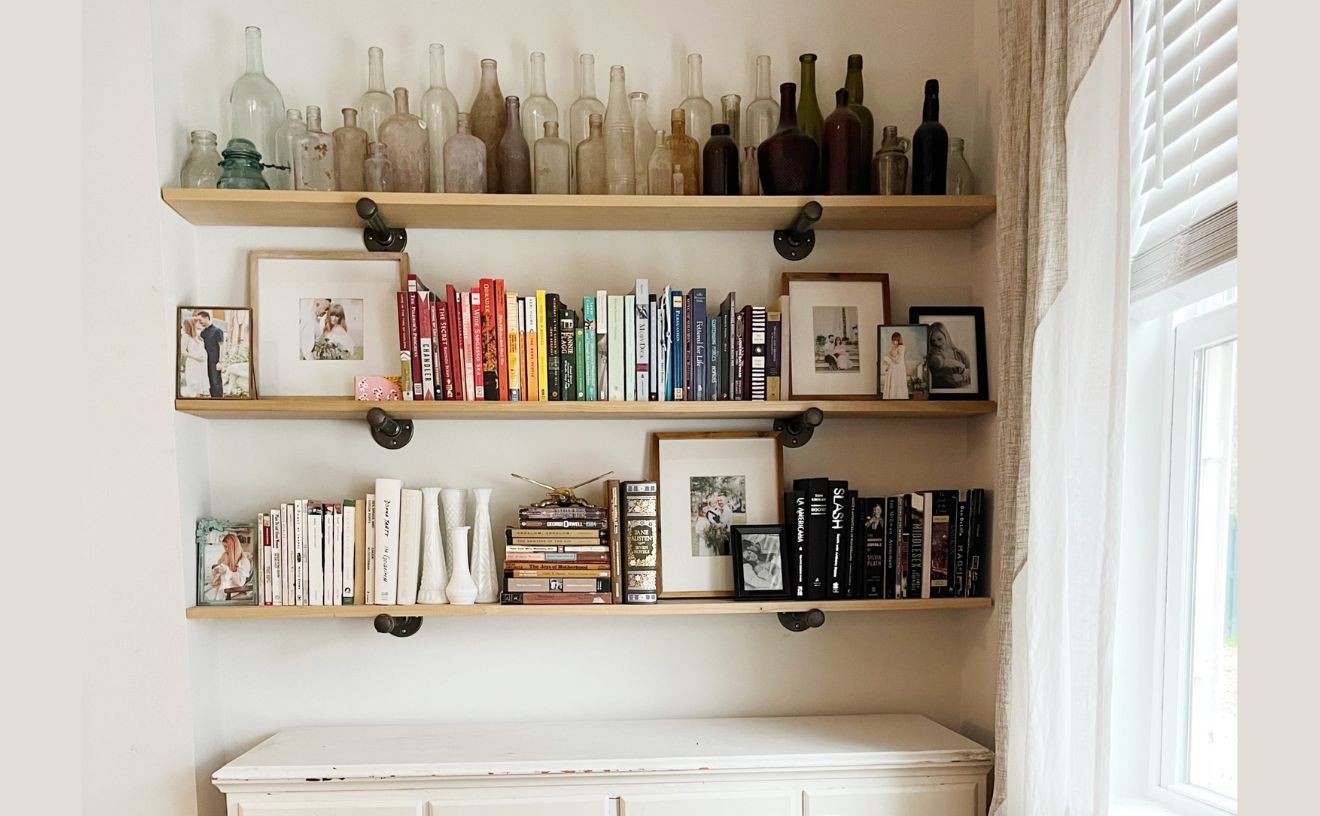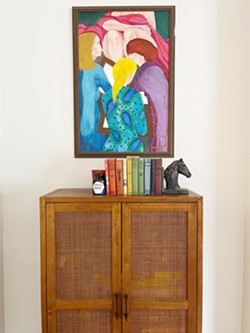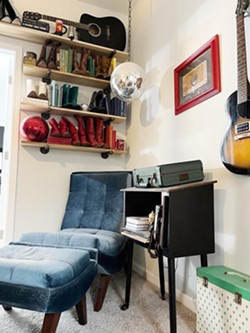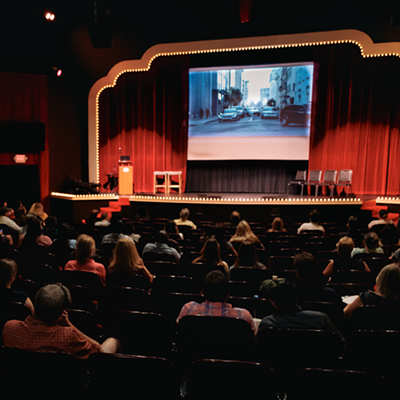One big buzzword in home design right now is upcycling. Thrift stores, antique markets and even Facebook Marketplace aren’t just ways to save money and instead have become a haven for young homeowners and hip décor enthusiasts.
Upcycling focuses on repurposing items by either fundamentally altering their form and use, or just simply reimagining a used piece into something fresh and stylish. While there are several advantages to designing in this way, such as reducing the environmental impact of furniture and home décor production, and being more economically advantageous, the most powerful reason that this trend has taken over the market is because a statement, design-led, personalized aesthetic is no longer exclusive to the bourgeoisie. It is a chic and thoughtfully eclectic process that scoffs at classicism and embraces its attainable nature.
Upcycling has become an entire movement that spans all corners of developed societies and most strongly in the United States from the sunny shores of Los Angeles, CA all the way to the southern treescapes of Savannah.
Personally, it’s the story that makes the pieces really work in a room and being able to share those special finds with guests who admire your style. It’s the story that really breathes life into a space.
However, even with all the advantages of the “going green” trend, one pretty significant hurdle is without a showroom that pieces it all together, you have now transformed from consumer to designer which can feel daunting and overwhelming. I myself did not go to design school and while my home is highly curated, it was a slow process that took a lot of time and thought.
As a self-proclaimed vintage design expert, here is the advice that I most divvy out to people who want to know how I achieve my highly personalized style.
One Room, One Piece
Instead of trying to take on an entire home or multiple rooms, I take on one space at a time. Pinterest has become a place where people build a dream board of sorts of what they want their room to look like, but personally, I feel like even doing that can be overwhelming and is working backwards because you end up just trying to replicate a picture.
Instead, take a stroll in an antique store and find just one thing that your drawn to and love. It can be a single chair, a piece of art or even something as innocuous as a fun vase. I built my eldest daughter’s nursery around a pair of curtains.
Then, use that piece to work forward in your design. Does the chair inform a period of aesthetic that you enjoy, such as mid-century-modern? Does the piece of art use colors that you would like to move into a pillow, throw blanket or rug? Is the vase simple and chic, or is it loud and colorful, and does that help you know what your vibe is?
In Savannah, my favorite place to stroll is Picker Joe’s, located at 217 E. 41st St. The store is divided into booths that different sellers rent out and you get a good mix of style and item diversity that changes almost daily.
Don’t Judge a Book by Its Cover
Don’t be afraid to step out of the box and find new and creative ways to use things that you find. Just because a hat is a hat, doesn’t mean you have to wear it on your head. Hang it on your wall next to a great picture, or do a gallery wall of cowboy hats. Bonus if you like to wear the hats as well, because then you just turned function into design.
Some of my most favorite oddities in my home include a collection of vintage cans that I have placed together on a window seal and planted succulents in, a collection of colorful cowboy boots that I have color-blocked on wall shelves with antique books and disco balls, an antique sewing table that I transformed into a table for my record player, and a pair of lamp shades that I stripped the material off of and turned into industrial pendant lights.
The key is to find something interesting that you love and then find a place for it. I can’t tell you how many times I bought something that I initially had no idea what to do with it and then found it a home on a counter or shelf and it looks like I intended it all along.
Discover Instead of Order
When it comes to buying furniture, it can be tempting to find something cheap and stylish on Wayfair and have it delivered to you, but resist the urge. Nearly every piece of furniture in my home was found and not just in a thrift store, a dresser nestled under custom wall shelves in my living room was rescued from a dumpster.
When you take on discovering furniture, it instantly elevates your space. Thrifting furniture can be tricky, especially since antique stores and popular thrift stores price these large items well above your budget. The number one place I buy furniture is Facebook Marketplace.
Most sellers just want the piece out of their home and are more than happy to haggle (it’s actually expected and it’s why I price my items $20-50 over what I actually want). However, when it comes to buying furniture, you have to be careful to not go from designer to crafter. Look for pieces that have real wood and show their natural grain instead of some composite wood that needs a heavy coat of paint.
If you take anything away from this article, please let it be this: Don’t ruin good, wood furniture with bright paint or chalk paint. The quickest way to make a piece of furniture look cheap is to paint it and while this should go without saying, do not stencil anything on it.
Instead, opt for a light sanding and stain to revive life. Your solid, furniture pieces don’t need to be colorful, instead, leave that up to your couch, rug, curtains and other textiles. One of my favorite places to textile shop is Tapley’s Mercantile and Antiques, located at 8491 Waters Ave. Like Picker Joe’s, it also features different booths by different sellers.
Find Real Art
While I’m not trying to deep dive into the intricate nature of what is art and who decides, I will tell you my definition of real art.
If your art comes from a big box store and there are multiples of that same piece all piled in a row, that not art, that’s a product. I know that those adorable highland cow pictures at Hobby Lobby and Home Goods are so tempting, but trust me, the awe of the piece will fizzle as time goes on.
Not a single piece of art in my home is from a big-box store. The majority of my art was painted by my Grandmama Martha Cassels before she passed, which I love because I am reminded of her each day and I can share the story of her life with others who inquire about her pieces. The remainder of my art are prints and posters I found in antique stores and things like antique scarves, playing cards and my husband’s favorite, an antique cigar box lid that we matted.
Art doesn’t have to be expensive and doesn’t have to be from a gallery and my only rule when it comes to art in my own home is that if I don’t absolutely love it, I don’t buy it or hang it.
A really cool antique store that I have found good art and frameable pieces is the Wright Square Vintage & Retro Mall, located at 14 W. State St. They are also comprised of booths by different vendors, but out of all the stores in Savannah, they are the most reasonably priced without sacrificing quality.


































